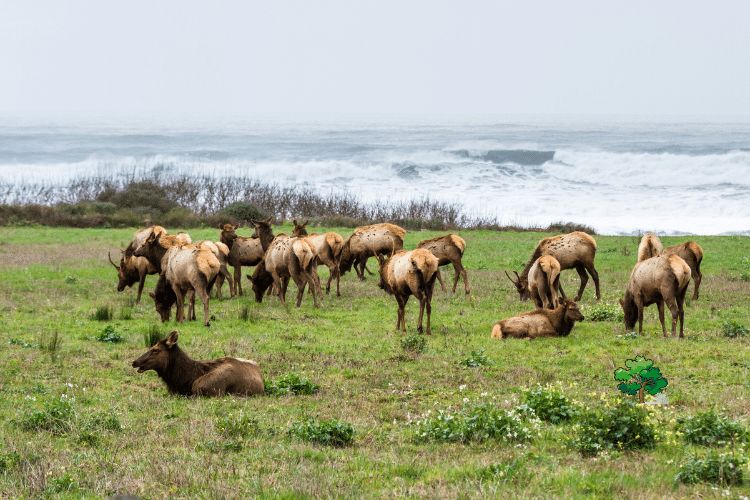Explore 15 animals seen in Olympic National Park, with tips and trails for your own wildlife adventure
If you’ve ever wondered who you might bump into while hiking the lush trails of Olympic National Park, you’re in for a treat!
Our recent trek turned into an unexpected meet-and-greet with some of the park’s most interesting residents. From the majestic Roosevelt Elk to the elusive orcas, we saw them all—and snapped plenty of photos to prove it!
Join us as we recount our trail tales, share tips on where to spot these creatures, and maybe inspire you to plan your own wildlife adventure.
Get ready for a glimpse into the ‘who’s who’ of Olympic National Park’s animal kingdom. Let’s get wild!
The Roosevelt Elk
The Roosevelt elk, also known as the Wapiti, are large deer with a prominent shoulder hump, dark brown to blackish brown coat, and long, dark-colored legs.
The Roosevelt elk is the largest North American deer species, with males weighing up to 1,200 pounds (544 kg). The name was given by President Theodore Roosevelt in 1902 after he witnessed the huge antlers of an elk while on a visit to Yellowstone National Park.
The Olympic Peninsula is home to one of two subspecies of Roosevelt elk, which is found only in Washington state and British Columbia. Olympic National Park has one of the largest populations of this subspecies.
Roosevelt elk are adaptable animals that thrive in diverse habitats, ranging from rainforests to high alpine meadows. They prefer lowland forests or mountain meadows with access to water.
They are grazers who eat grasses and sedges during the summer months and twigs and bark during the winter months. During spring and fall they feed on high-energy foods like acorns and pine nuts.
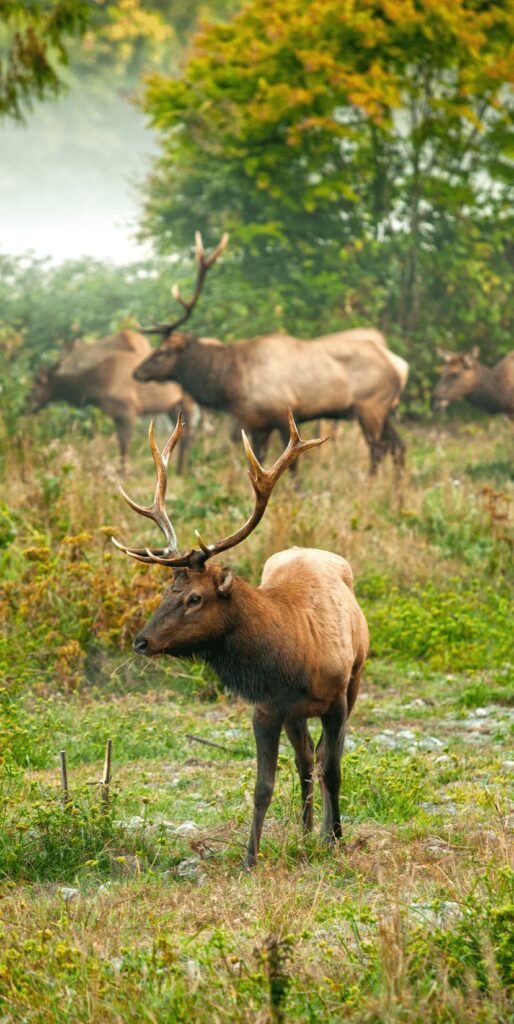
Black Bears
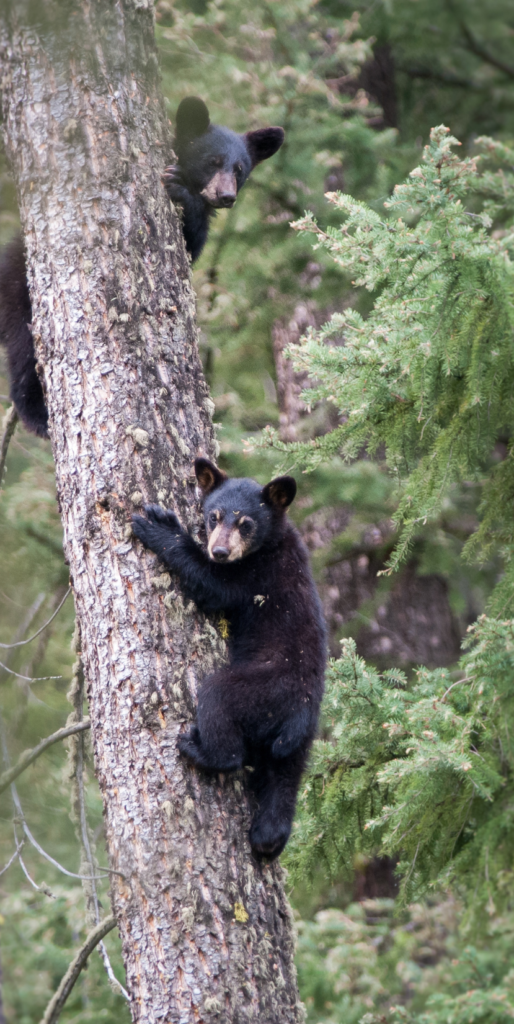
Black bears are the most common bear species in the park. They can be found all over the Olympic Peninsula, from the beaches of the Pacific Ocean to high mountain meadows.
Their favorite foods include berries, huckleberries, salmonberries, thimbleberries and other plants. Black bears are not always black in color. Sometimes they can be brown or blond with black stripes on their back.
There are two subspecies of black bears in the Pacific Northwest: the coastal and the inland subspecies. The coastal subspecies has a wide range that extends from British Columbia down through Washington state and into northern California.
It’s smaller than its inland counterpart, with a maximum weight of 400 pounds (181 kilograms) or less compared to 600 pounds (272 kilograms) or more for an inland male bear. However, both types have similar diets and behavior patterns.
When it comes time to mate, male bears compete for access to females by competing for food sources and establishing dominance over other males by displaying their size and strength through fighting or bluffing displays (such as standing up tall on their hind legs). Males have no part in raising young; females do all of the caretaking duties alone.
Olympic Marmot
Olympic marmot is a small-sized, rodent species that are found in the Olympic National Park. These marmots live in burrows, which they dig themselves. They can be seen on the Olympic Peninsula, but you will have to go looking for them if you want to spot one.
Olympic marmots are usually grayish brown in color with a lighter underside. They have a large head, short legs and small ears. They look like a small beaver or woodchuck and weigh between 4 and 6 pounds (1.8 – 2.7 kg). They are also known as rock chucks due to their ability to climb rocks easily.
The diet of these marmots consists mainly of grasses, flowers and berries. Sometimes they also eat roots, bulbs, insects and fungi when food is scarce or during hibernation period when they are inactive for several months due to lack of food supply during winter season.
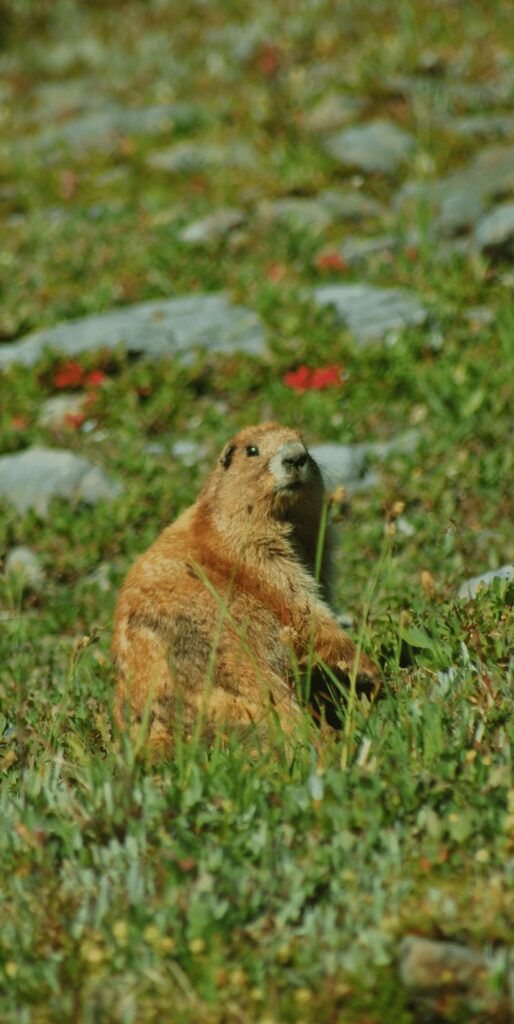
Olympic yellow-pine chipmunk
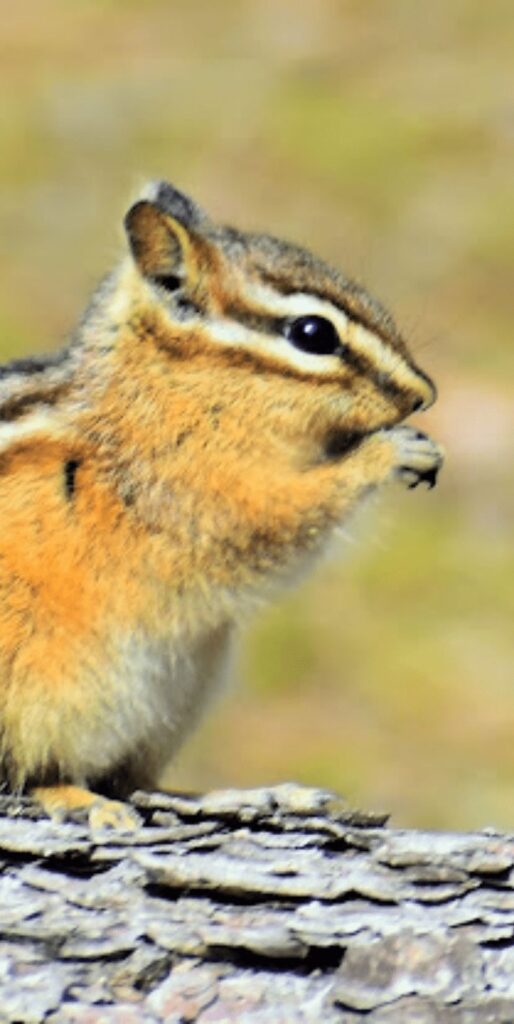
The Olympic yellow-pine chipmunk is a small rodent that lives in the forests of the Olympic National Park. The park protects the forest habitat of this species and other wildlife, including the northern spotted owl, marbled murrelet and northern goshawk.
The Olympic yellow-pine chipmunk is classified as a threatened species by Washington State law. In addition, it is protected under the federal Endangered Species Act (ESA). The ESA requires that federal agencies ensure that their actions do not jeopardize any listed species or destroy its critical habitat.
The Olympic National Park protects more than 25% of the Olympic Peninsula’s old growth forest, which is home to many rare species including this one.
Olympic Short-tailed Weasel
The Olympic short-tailed weasel is a subspecies of the North American short-tailed weasel found only on the Olympic Peninsula in Washington state. The Olympic short-tailed weasel is one of the smallest carnivores in North America, growing to only about 10 inches long with a tail about 7 inches long.
They weigh about 1 pound. The fur is usually brownish gray in color with white spots on the face, chest and belly. The tip of its tail is always black, but it may fade in color during summer months.
Olympic short-tailed weasels are solitary animals that rarely interact with each other except during mating season when they will mate with multiple partners. They produce 2 to 3 litters each year with 2 or 3 young per litter.
They live almost entirely off of small rodents such as voles, mice and rats but occasionally prey upon larger mammals like rabbits and squirrels if necessary. They often use their sharp claws to climb trees where they can hide from predators or escape them if need be by jumping down from branches onto the ground below them.
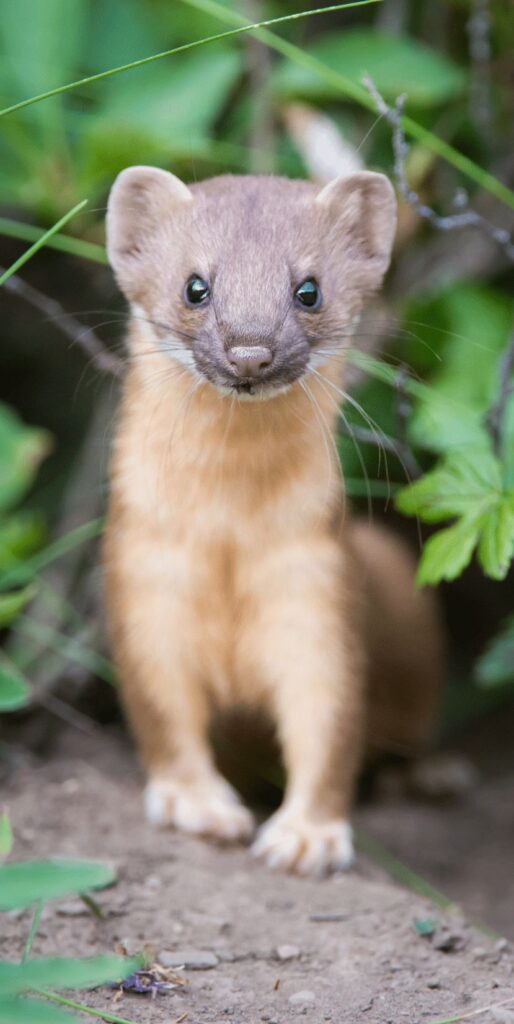
Olympic Torrent Salamander
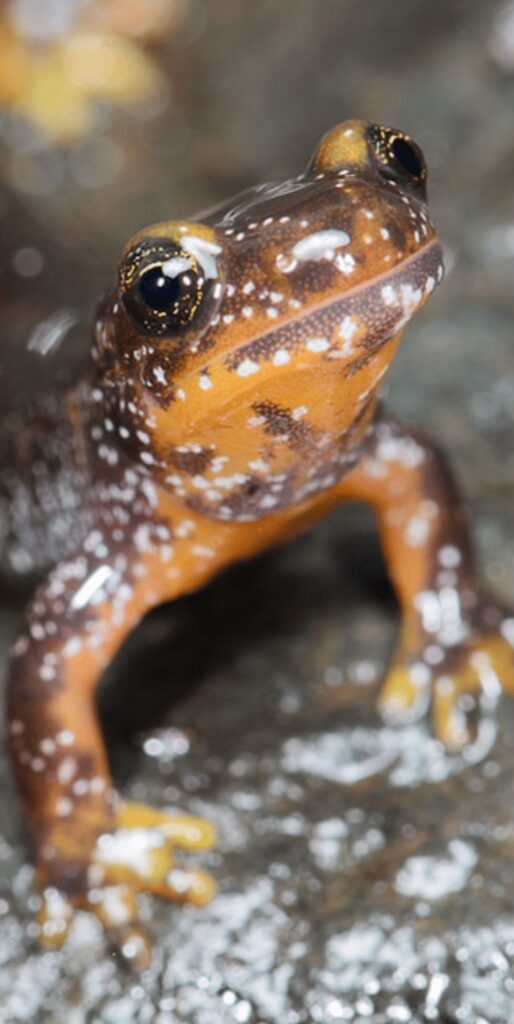
The Olympic Torrent Salamander is a species of amphibian found in the Olympic Mountains of Washington State. It is the only species in its genus, and is one of only two known species that live in montane rainforests (the other being the highland torrent salamander). It is listed as a threatened species by the U.S. Fish and Wildlife Service.
The Olympic torrent salamander has been found at elevations up to 2,500 meters (8,200 feet) above sea level in streams with fast-moving water. It has a large head and short limbs, which makes it well adapted for living in fast-flowing streams.
This species is brown, gray or black with light spots on its back and sides. The underside is white, yellowish or orange with dark blotches. This species can grow up to 5 inches long.
Arionid Jumping Slug
The Olympic National Park is home to many unique animals and plants, but one of the most interesting is the arionid jumping slug. This species of slug is unique because it has no shell and instead jumps from plant to plant to escape threats.
The arionid jumping slug is a small animal that can be brown or yellow in color. It lives on the ground and feeds on decaying organic matter. These slugs move by pulling themselves along with their foot, which has two rows of small spines like those found on a caterpillar’s feet.
The arionid jumping slug has been observed using its foot to jump up to three feet off the ground by using its tail as a springboard. This allows it to escape predators like birds and small mammals that would otherwise be able to eat it easily while it was on the ground. If a predator is too close, however, this animal may roll into a ball with its head tucked under its shell and remain still until the danger passes.
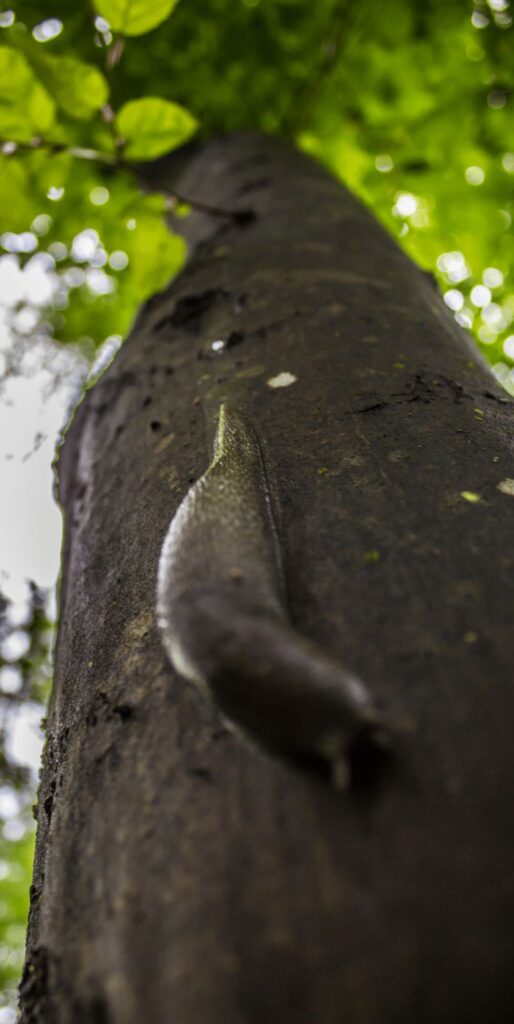
Banana Slugs
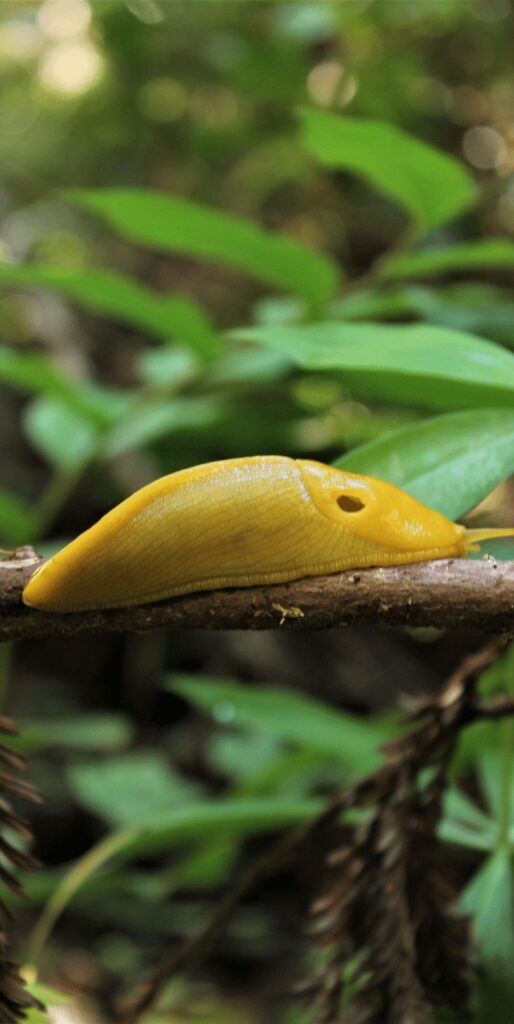
The Olympic National Park is a great place to see the banana slug, a gastropod mollusk that is native to the Pacific Northwest.
The banana slug is a large, greyish-yellow slugs with a large head and prominent eyes. They are found on rainy days, especially near sunny areas where they sun themselves for hours at a time. Banana slugs can grow up to 10 inches long, but when they are full grown they are only about 1 inch long. The largest banana slug ever recorded was 2 pounds, 9 ounces!
They eat fungus and decaying plants like salal berries and salmonberry leaves. They will also feed on living plants such as strawberries and rhododendrons if they get hungry enough!
Sea Otters
Sea otters are a delight to watch, but they can be hard to find. The easiest place to see them is at the beach in the Olympic National Park, which is where I was fortunate enough to go on my trip.
Sea otters are often seen floating on their backs and bobbing up and down with the waves. They do this for two reasons: one is because it allows them to keep an eye out for predators (there are lots of other animals that would like to eat sea otters, including sea lions and orcas), and two is because it keeps them warm. They can’t control their own body temperature very well, so they rely on the heat from sunlight or from being out in the water.
If you do get lucky enough to spot a sea otter, make sure not to get too close or touch it! They’re very protective of their young and will attack if they feel threatened.
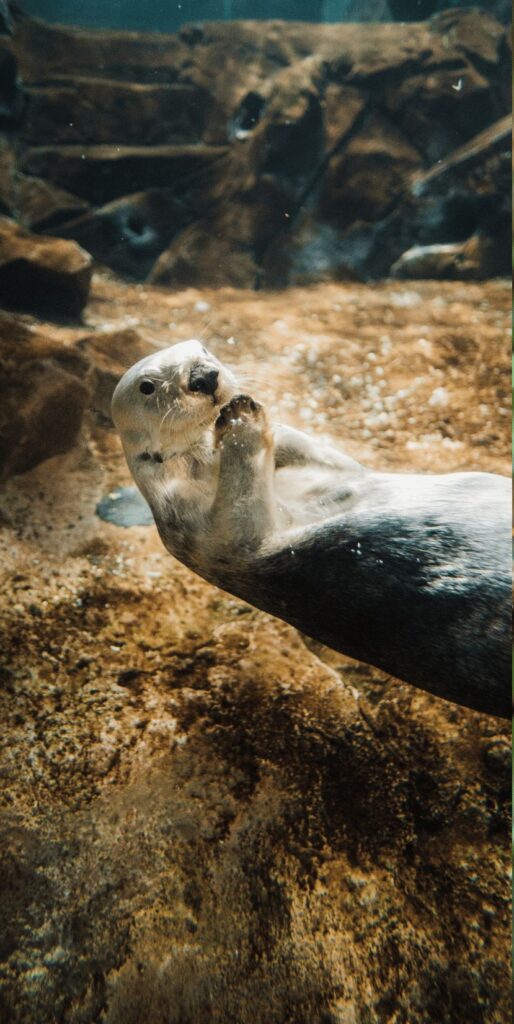
Gray Whales
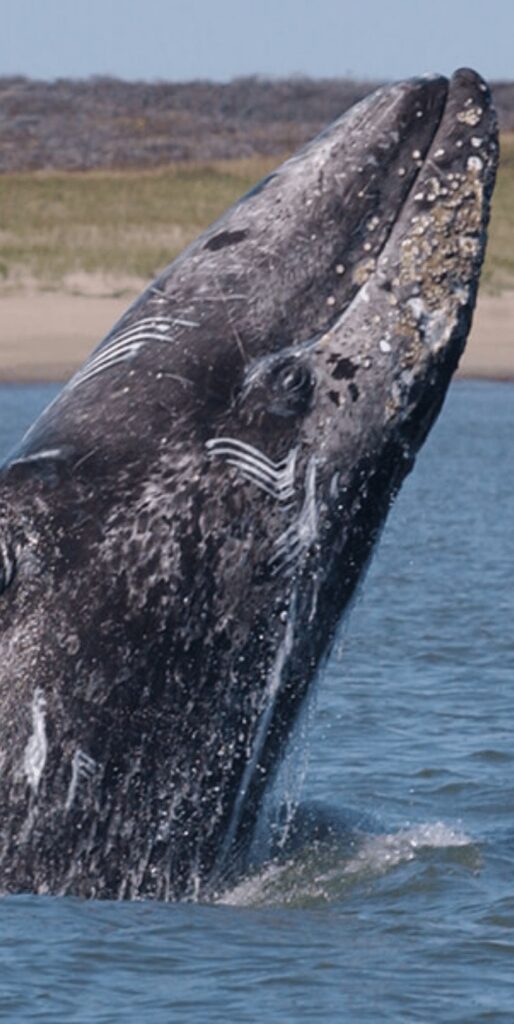
Sea otters are a delight to watch, but they can be hard to find. The easiest place to see them is at the beach in the Olympic National Park, which is where I was fortunate enough to go on my trip.
Sea otters are often seen floating on their backs and bobbing up and down with the waves. They do this for two reasons: one is because it allows them to keep an eye out for predators (there are lots of other animals that would like to eat sea otters, including sea lions and orcas), and two is because it keeps them warm. They can’t control their own body temperature very well, so they rely on the heat from sunlight or from being out in the water.
If you do get lucky enough to spot a sea otter, make sure not to get too close or touch it! They’re very protective of their young and will attack if they feel threatened.
Bald Eagles
The Olympic National Park is home to many animals. The Bald Eagle population is one of the most well known in the area.
The Bald Eagle was officially declared the national bird in 1782. It is an endangered species, but it has made a comeback since DDT was banned in 1972 and the Clean Air Act was passed in 1970.
The bald eagle lives in many areas of the United States. They are found mainly along coasts or rivers where they can fish for their food. They are sometimes found inland as well when migrating season comes around. Eagles need to eat about one pound of food per day to maintain their weight, so they will be able to fly longer distances without having to land for food.
The bald eagle got its name from its white head and tail feathers while other eagles have brown feathers on their heads and tails. These feathers help protect them from predators while they’re hunting for food or nesting sites during breeding season.
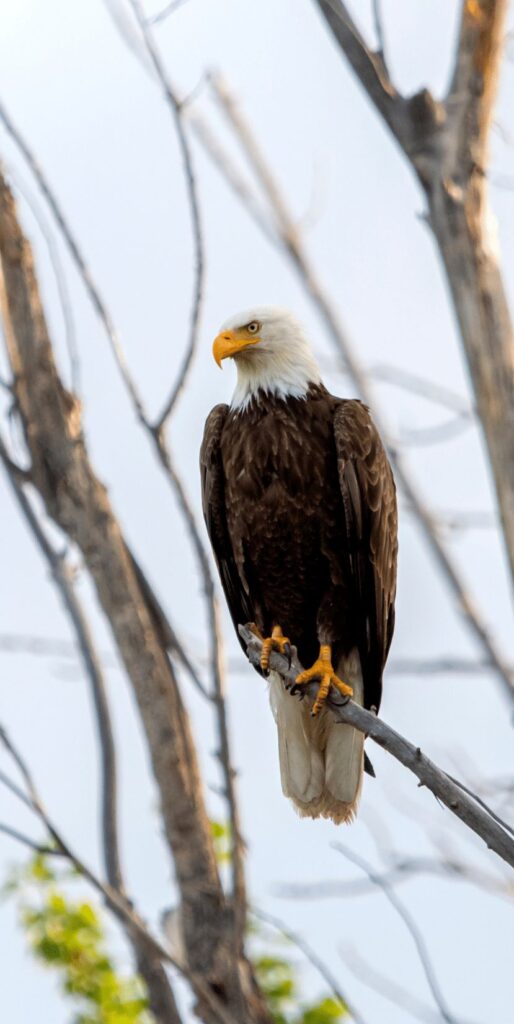
Mountain Lions
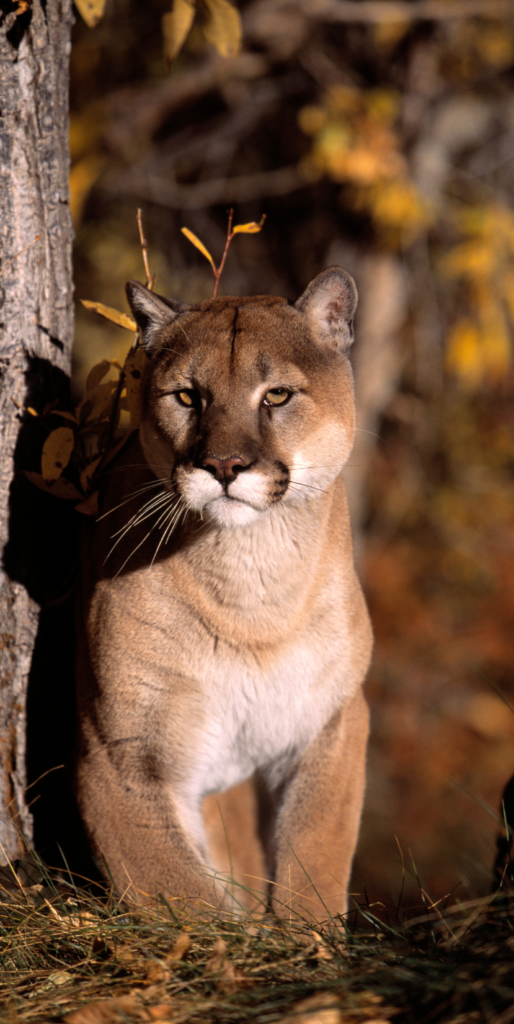
The Olympic Mountain lion is a subspecies of cougar that lives on the Olympic Peninsula in Washington state. They are very similar to other mountain lions, but they have a darker coat with more spots than other populations.
The mountain lion’s diet consists mainly of deer and elk, but they will also eat smaller mammals and birds when deer or elk aren’t available. After killing their prey, they drag it up into a tree or rock formation so that other animals cannot steal it from them.
Mountain lions tend to avoid humans if possible by hunting at night when humans are sleeping or during the day when we are not around.
Sockeye Salmon
Salmon are the lifeblood of the Pacific Northwest. They feed our rivers and streams, provide food for bears and other animals and bring in millions of tourist dollars.
The salmon that swims up the Nisqually River on its way back to the Pacific Ocean is called a Sockeye salmon. It’s one of many different species of salmon that live in this region.
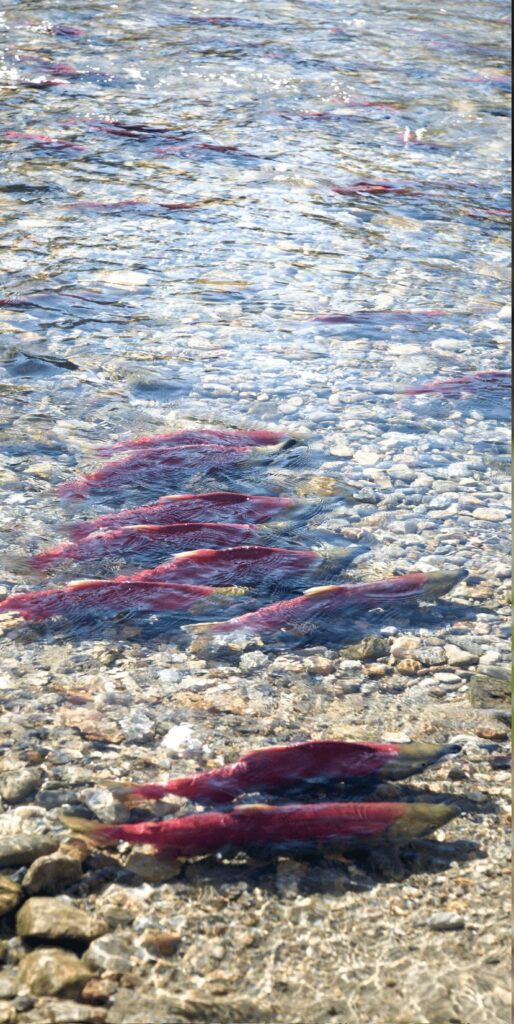
The Northern Spotted Owl
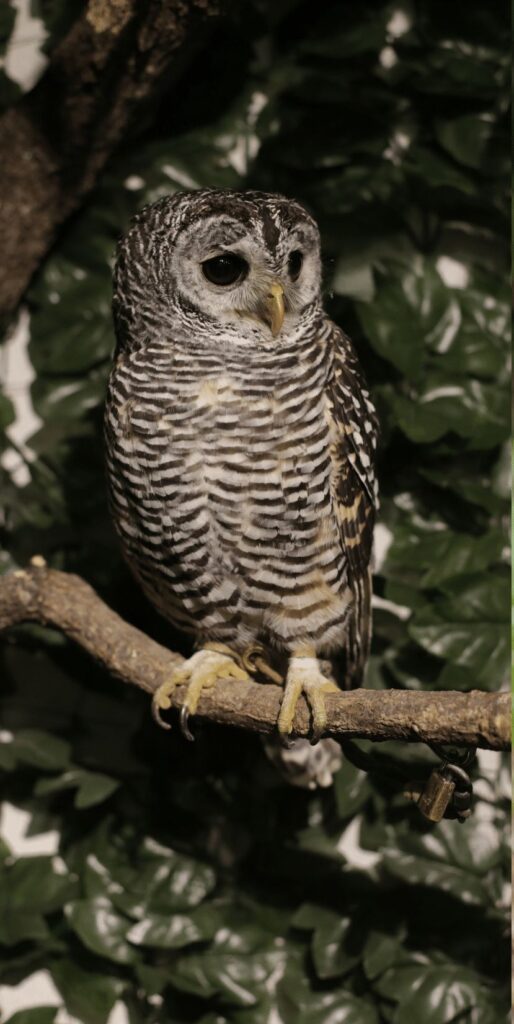
The Northern Spotted Owl is a very secretive bird and its life history is still not well understood. The best way to increase our knowledge of this species is to observe it in its natural habitat.
The Olympic National Park has the largest population of spotted owls in Washington State. There are approximately 100 pairs of this endangered species living in the park.
They prefer old-growth forests with large trees for nesting and roosting sites, but also use second-growth forests for hunting and feeding when old growth becomes scarce.
Orcas
Visitors come to see the park’s many scenic landscapes: mountains, lakes, rivers and forests. They also come to see its famous wildlife — from adorable marmots to majestic elk — and its dozens of species of threatened and endangered plants and animals.
But perhaps no animal has become as synonymous with the Olympic Peninsula as its resident orca population. The orcas (also known as killer whales) can be found feeding on salmon along the coast of Washington state during summer months. And while they may not be your typical tourist attraction (especially since they’re wild animals), they’re certainly worth seeing if you’re visiting Washington’s Olympic Peninsula during whale season!
Orcas can be seen from shore at various locations along the shoreline of the Olympic Peninsula. In addition to these sightings from land, there are also several companies that offer whale watching tours out on Puget Sound.
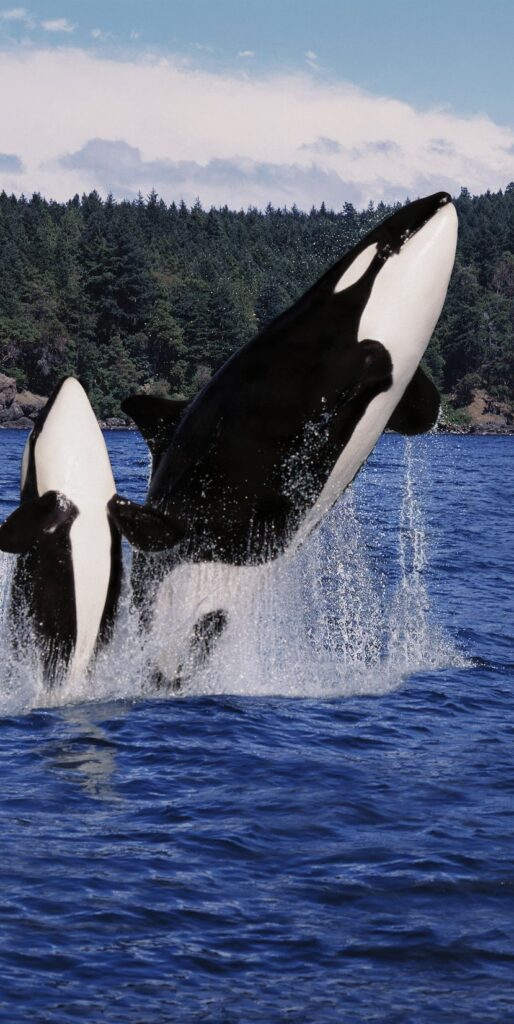
7 Spectacular Trails for Wildlife Encounters in Olympic National Park
Olympic National Park beckons adventurers and animal lovers alike to tread its diverse trails for some of the most spectacular wildlife viewing opportunities in North America.
The following trails have been handpicked not just for their breathtaking scenery but for the likelihood of spotting the park’s wild inhabitants in their natural habitats.
Each trail presents a chance to walk through the pages of a living nature guidebook, so lace up your boots, grab your binoculars, and prepare for a true wilderness adventure.
Hoh Rain Forest Trail: Hall of Mosses & Hoh River Trail
Traverse into the heart of an ancient ecosystem where the Hall of Mosses loop, a mere 0.8-mile trek, offers a brief yet immersive rainforest experience.
For the more intrepid, the Hoh River Trail extends an enchanting 17.4 miles out-and-back journey alongside the river.
Keep your senses alert for Roosevelt elk rustling through the underbrush, the watchful northern spotted owl perched silently above, and the occasional black bear foraging amidst the ferns.
Hurricane Ridge Trails: Hurricane Hill
The Hurricane Hill trail, a moderate 3.2-mile round trip, is a high-country trail that opens up to 360-degree panoramic views.
As you ascend, the chances of spotting mountain goats perched on rocky outcroppings, black-tailed deer grazing in the meadows, and marmots sunning on stones increase with every step.
The vibrant wildflowers and the potential to see a wide variety of birds add color and movement to the scenic tapestry.
Sol Duc Valley: Lover’s Lane Loop
At 6 miles round trip, the Lover’s Lane Loop combines the best of the Sol Duc Valley, skirting along the Sol Duc River and weaving through old-growth forests.
The area is a prime habitat for spotting elk and deer, particularly in the early morning or late evening. The river’s ecosystem also supports otters, beavers, and dippers—a treat for those fascinated by aquatic life.
Ozette Triangle: Cape Alava Loop
Spanning a 9.4-mile loop, this trail is unique for its section of coastal wilderness, where the land meets the Pacific. The beach stretches offer the possibility of observing sea otters and seals playing in the kelp, while the forested sections could reward you with sightings of elk and bald eagles soaring overhead.
Staircase Rapids Loop
This family-friendly 2.2-mile loop leads hikers along the North Fork of the Skokomish River, through dense forests teeming with wildlife. The lush surroundings are a haven for black bears, river otters, and a symphony of bird species. It’s an ideal choice for those seeking a shorter yet rewarding wildlife viewing experience.
Elwha River Trail
The Elwha River Trail offers a longer expedition into the park’s backcountry, stretching 11 miles one way. Along this historic river valley, hikers may encounter the regal Roosevelt elk, black bears, and a plethora of bird life. The trail’s length and remote nature mean fewer crowds and a greater chance for serene wildlife encounters.
Seven Lakes Basin & High Divide Loop
This challenging 19-mile loop is for serious hikers eager to venture into the higher elevations of the park. The reward for this arduous trek is not just the alpine scenery, but also the wildlife that calls it home: mountain goats, marmots, and pika. Early morning hikers may also catch the elusive deer and elk foraging in the basins.
Each trail in Olympic National Park offers a unique promise of wildlife encounters set against the backdrop of some of the most stunning landscapes in the Pacific Northwest. Whether you’re seeking a short jaunt or a multi-day excursion, the park’s trails await to unveil the wonders of the wild. Remember to respect the wildlife and keep a safe distance – these experiences are a privilege that comes with the responsibility of stewardship and conservation.
Conclusion
As you can see the Olympic National Park is full of wildlife that is just waiting to be seen. This article isn’t meant to give you an exhaustive list but rather just a sampling of animals you might see on your own visit. Although the North Cascades are definitely worth a visit as well!
Overall, the Olympic National Park is a phenomenal place to visit and experience with your friends and family, but don’t forget that it is more than just the scenic mountainous range.
It’s also a home for a variety of animal species, some of which you might never have thought could live in the area. As such, be sure to see all that the Olympic National Park has to offer—both above and below the surface.

